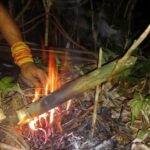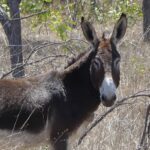Larger herbivores in African savannas formed game trails by regular use over eons of years and many, many generations. These trails connect water sources and feeding and bedding areas within their home range. And for a few of them, they serve to mark territories. Natural obstacles, like rocky hills, dongas (deep erosions), or water courses, are choking points where trails converge.
Types of game trails
Mixed game trails
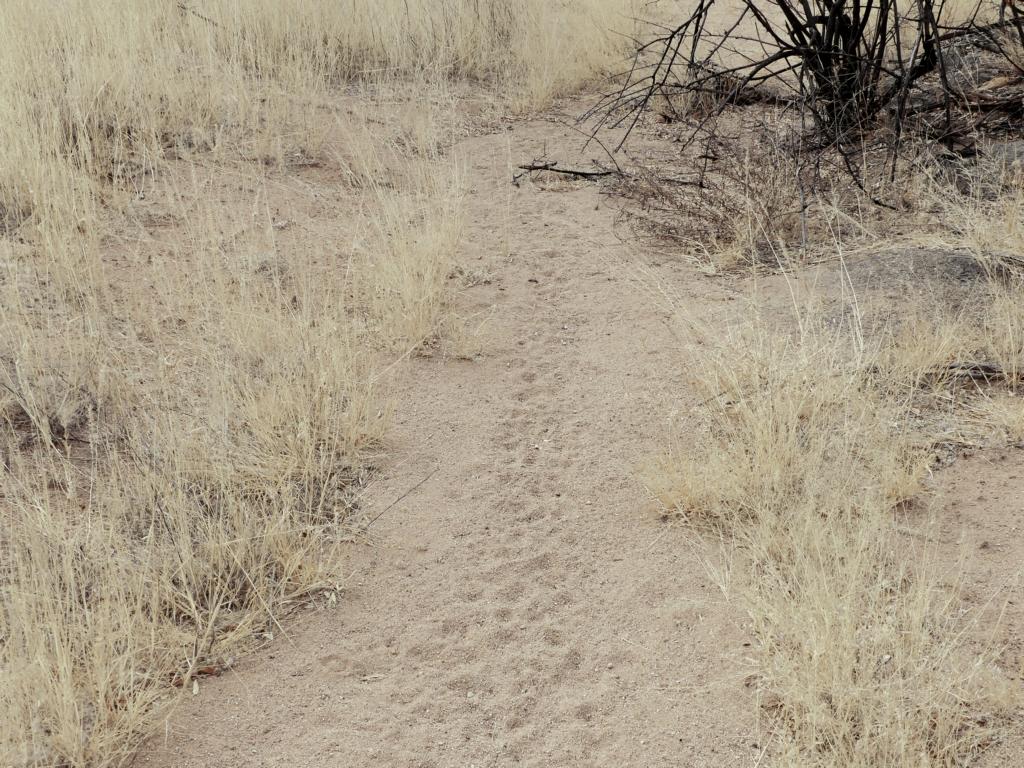
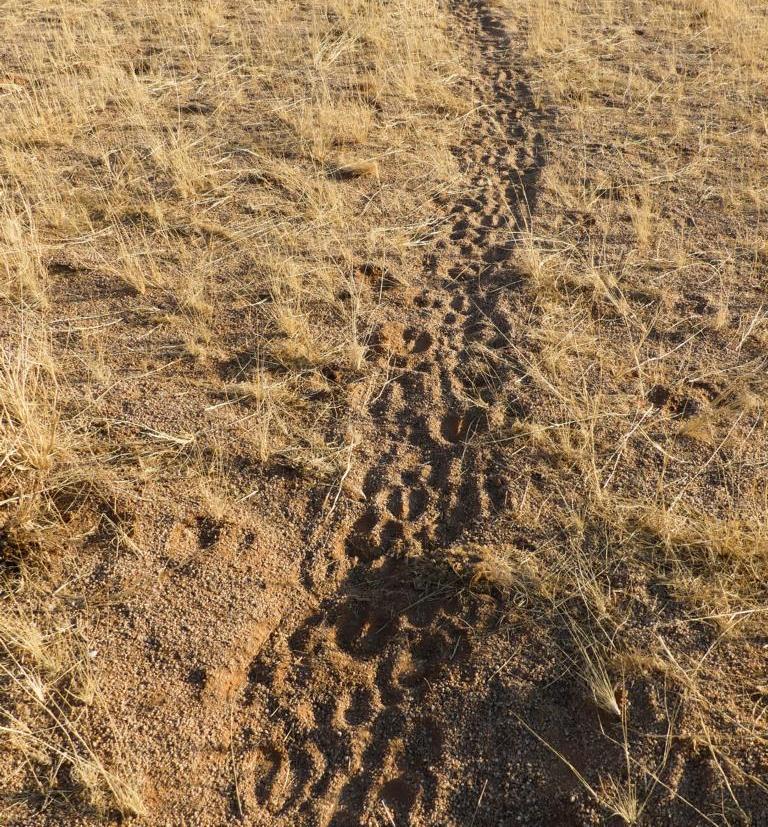
If we consider animal trails leading us to water sources, there are three different types. Firstly, there are mixed game trails, which meander through the savannah. They contain mainly the hooves of different antelopes and other herbivores, interspersed with paw marks and bird tracks.
Elephant trails
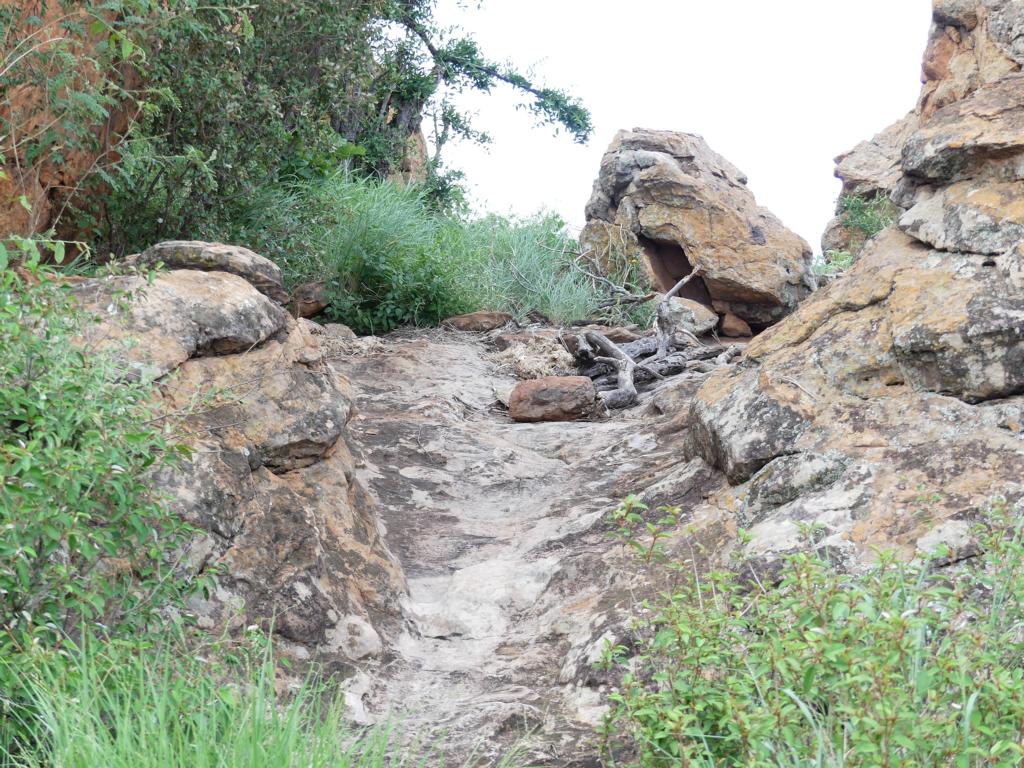

Secondly, there are elephant trails. They are like highways in the bush or savannah and easy to spot even over rocky areas. Typical elephant trail width will be from 1m (3 feet) to about 1,5 meters (5 feet) wide. There is often a smooth ground surface due to elephants’ flexible soles and weight. And there is also far less meandering compared to mixed game trails. Such elephant highways are also often used by other herbivores and carnivores. Smaller versions of elephant trails will be the territorial trails of Rhinos, which we disregard in the article.
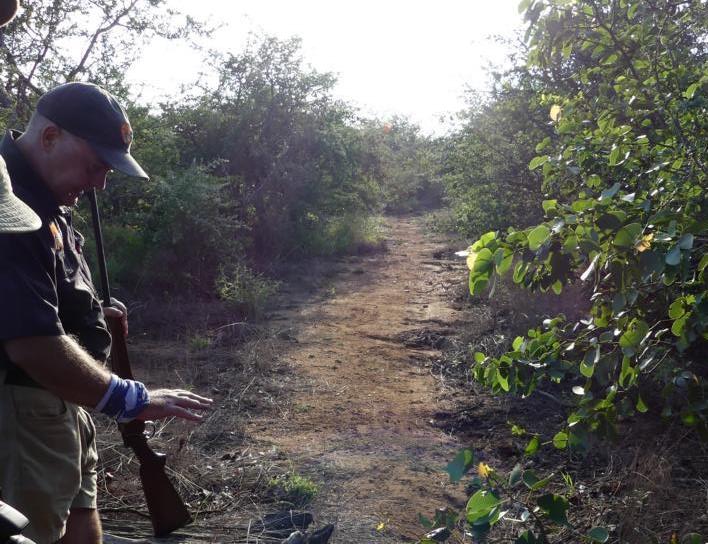
Although elephants will drink at least once a day, their trials are challenging to judge into which area (feeding, drinking, or resting) they lead. Therefore, a generalization is not possible. The lay of the land, combined with the surrounding vegetation, always has to be considered. But if finding on the elephant trail the correct direction towards the water, the water problems are solved. Elephants will always drink clean water and, if it is not available, will dig in the sand for clean water in sufficient quantities.
Hippo trails
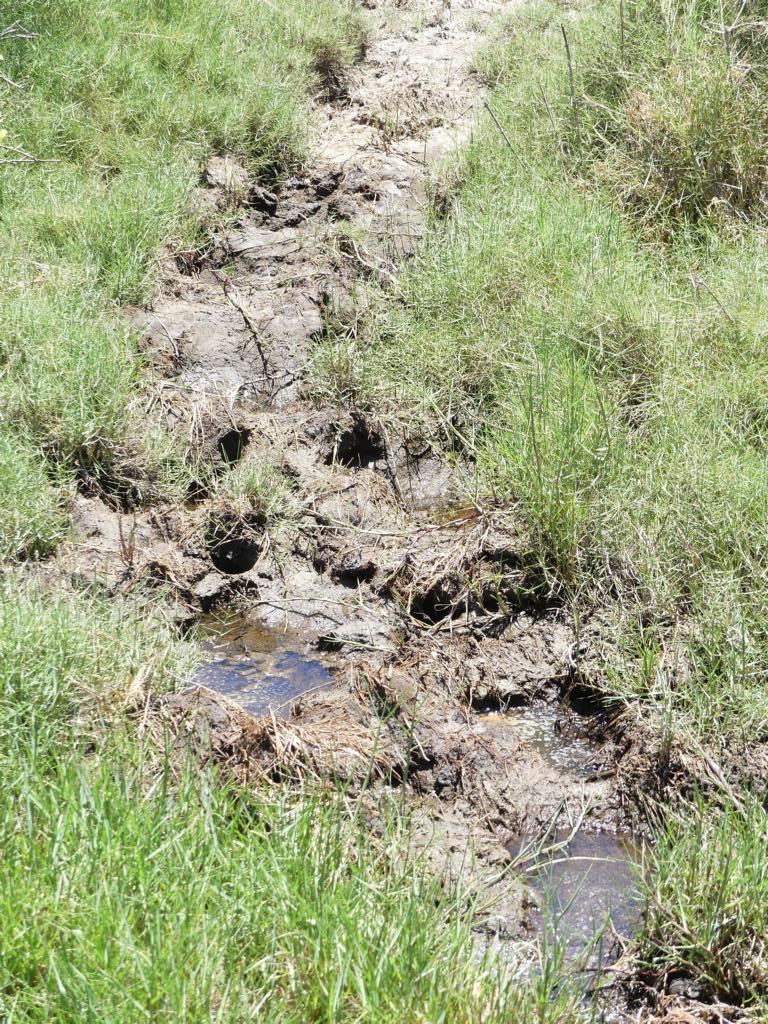

Thirdly, Hippo trails show two distinctive rows of tracks, which we already described in our article about the dangers of hippos on land. When standing in front of a game trail in the savannah and wondering where to go to find water, it is necessary to determine which type of trail it is: a mixed trail, an elephant trail, or a trail from hippos. If it is from hippos, it’s excellent, as they are always close to water. Just follow them opposite to feeding areas on land.
Y-shaped mixed game trails will lead to water.
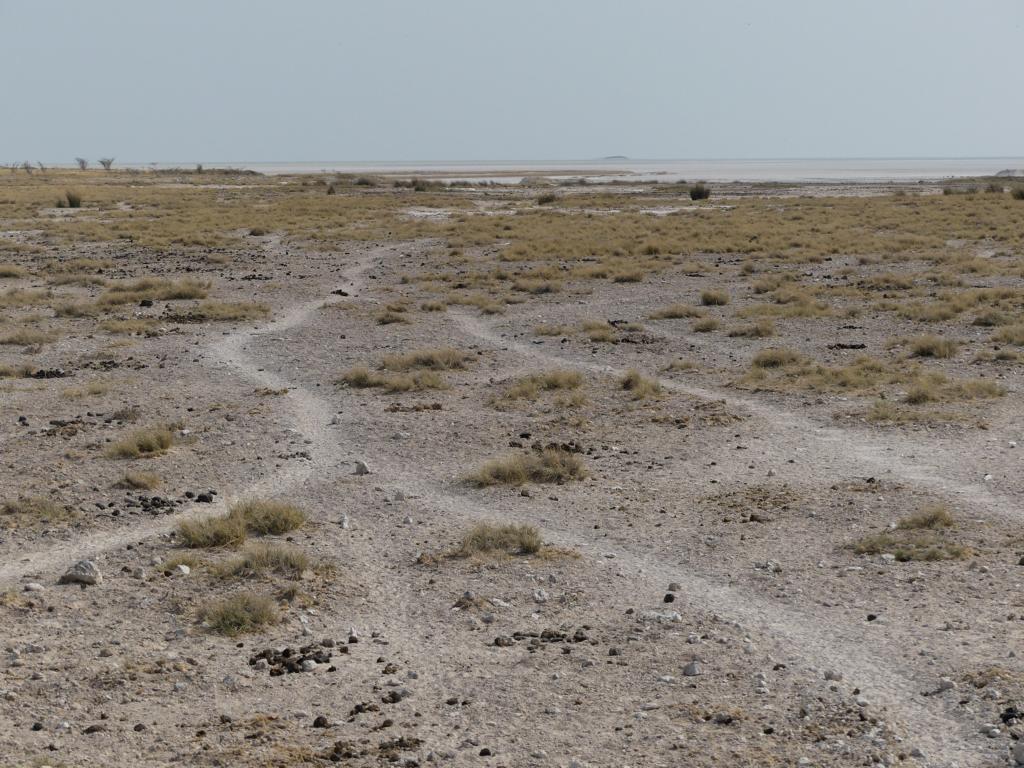
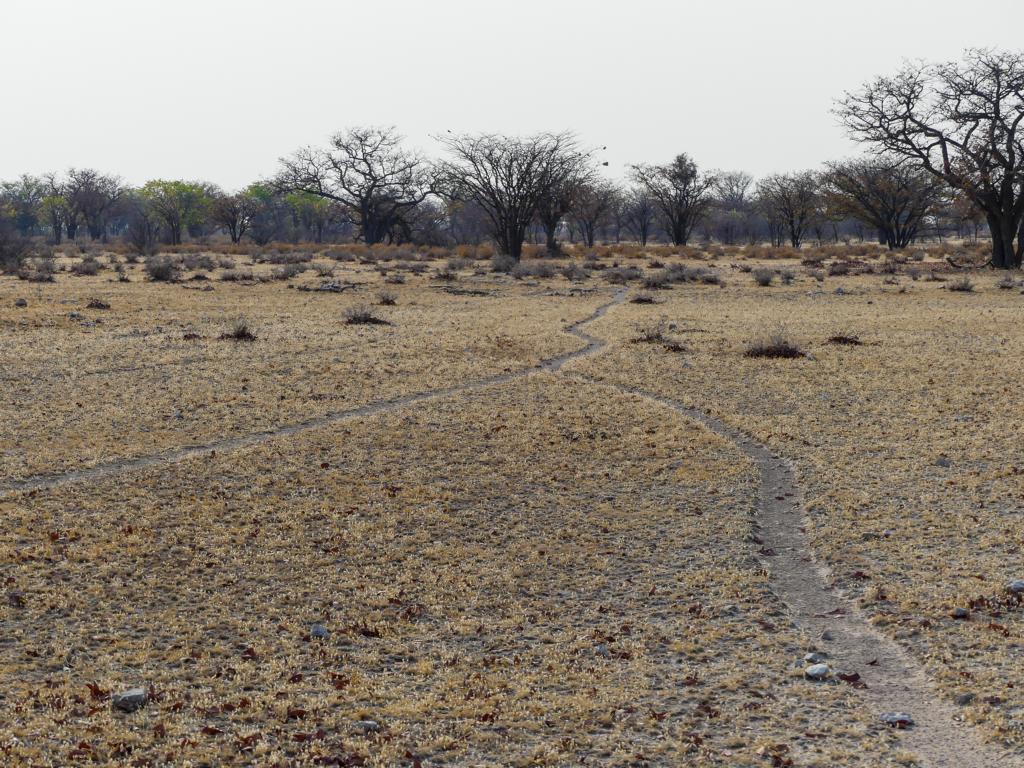
That leaves us with mixed game trails. And there are some parameters, which will help us solve the equation. One of them is that grazers must drink daily, whereas browsers do not. Grazers, for example, are Blue Wildebeest, Zebra, or Impala. Browsers, for example, are Eland, Kudu, or Klipspringer.
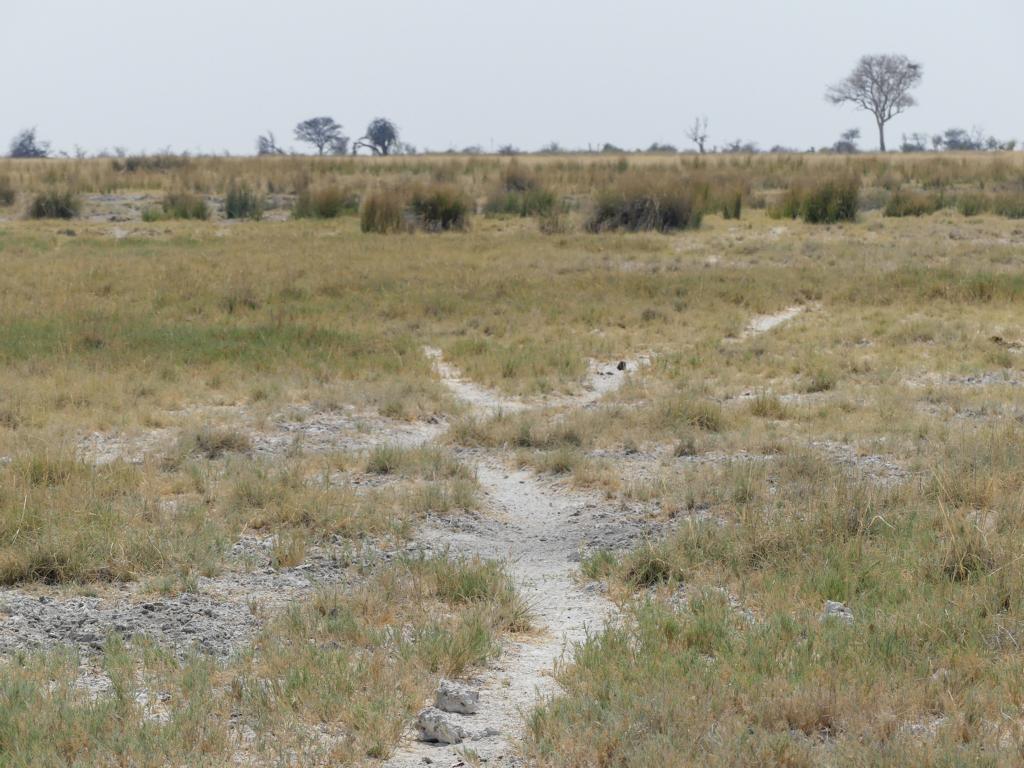
Seeing a trail with the tracks of grazers, not only the direction of where the hooves are pointing, is important, but the confluence with other mixed game trails is also essential. These merging trails form typical Y-shapes, from which the single resulting trail leads toward the water. In a typical flat savannah country, single waterholes or linear water lines (sandy creeks) with only specific access points will provide the life-saving liquid. Therefore, all game trails will converge towards these places with water.
One more piece of information is essential: Following mixed game trails with Zebra tracks will lead you to clean water because Zebras are very selective and will only drink the cleanest available liquid.
Lessons learned from animal trails towards water:
- In African savannah biomes, there are three main types of game trails.
- These are Mixed game trails, elephant trails, and hippo trails.
- Hippo trails are always close to water bodies.
- The direction of elephant trails toward water can only be judged by surrounding factors.
- Y-shaped mixed game trails will lead to water.
- Elephants and Zebras will only drink clean water.
.



